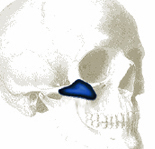When one thinks of facial aging, they inevitably look to the jowl and neck area.While this lower facial area is of big concern to many and is the foundation of facial rejuvenation surgery (usually through a facelift-type procedure), the underlooked area is the midface or cheek. As one ages, the cheek area sinks in and sags for many as it loses volume through fat atrophy. This is partly why a heavy person with a full face may still look somewhat youthful as they age. (known as the Santa Claus effect) A gaunter, thinner face, while interesting when one is young, can really show age when one is older.
Adding volume to the cheek has been recently shown to to help make a more youthful face. Based on cadaver work by Dr. Joel Pessa at the University of Texas at Southwestern, a deep fat compartment was identified in the cheek. When this fat compartment was enhanced through implants or fillers, there was an immediate improvement in the hollowing of the face. Not only does restoring volume to this cheek compartment make the cheek/midface area more youthful, it also helps improves the look under the eyes as well as around the nose and upper lip area.

Not every aging face patient needs cheek enhancement nor is it the mainstay treatment of most aging faces. But it can be a good complement to more conventional facelifting procedures and is a ‘missing component’ of some patient’s treatment plans whether they are young or old.
Dr. Barry Eppley
Indianapolis, Indiana



